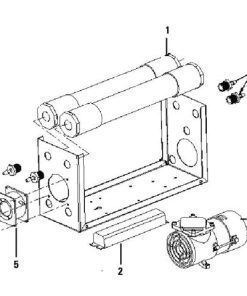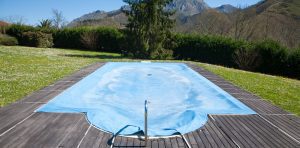Hottub, Swimming Pool
Step-by-Step Guide: How to Conduct a Spa Pool Risk Assessment
The following guide demonstrates the correct procedure for assessing spa pool risks
The foundation of safe spa pool management depends on performing an exhaustive risk assessment. This is not optional because it represents a legal requirement that you need to fulfill. The process requires the identification of potential risks followed by risk evaluation and the implementation of suitable protection measures. The HSE Guidance [8] provides the basis for this step-by-step guide to risk assessment.
Step 1: Identify Potential Hazards
The first step involves identifying all safety risks which exist in your spa pool system. These can be categorised as:
Warm agitated water creates a suitable environment for microbiological hazards that include Legionella pneumophila and Pseudomonas aeruginosa and various infectious agents [2, 47].
The water treatment chemicals including chlorine or bromine produce chemical hazards which stem from overdosing and incompatible chemical mixing and disinfection byproduct formation [48].
The physical hazards present risks of slipping and tripping and drowning as well as entrapment in spa equipment [5, 49].
Other Hazards: Examine all additional possible risks which encompass electrical risks and confined space risks and manual handling risks [49-51].
Step 2: Evaluate the Risks
Assess the risks that result from identified hazards after their identification. You need to determine how likely each hazard is to occur and how severe its consequences will be. Key factors to consider include [27]
Water temperature should remain within the range of 20-45°C because bacteria thrive at these temperatures. [2]
Bather Load: The number of spa users and their usage frequency determines this factor. Higher bather loads increase the risk of contamination [45, 52].
Water Quality: What is the source and quality of the water? Are there any known contaminants? [8]
The effectiveness of your disinfection system needs evaluation to determine its actual performance. Is it properly maintained? [13]
The filtration system needs regular checks to verify it operates correctly and receive proper maintenance. [13]
The cleaning methods should be sufficient enough to eliminate organic substances and stop microbial development. [53]
Step 3: Implement Control Measures
The implementation of risk reduction measures should focus on minimizing the identified dangers. The following measures must be implemented according to [8, 9]:
Water Treatment: A water treatment program should utilize proper disinfectants for microbial control and pH balancing of the water system [54, 55].
Filtration: A proper filtration system should be implemented to eliminate particulate matter from water [56].
Physical Controls should be put into place to ensure the spa receives a scheduled cleaning and disinfection routine along with its balance tank (if present) and associated equipment [53].
The spa area should have slip-resistant flooring while electrical devices must be safely secured and warning signs should be properly displayed to avoid incidents [49, 50].
Emergency Procedures: Establish a clear action plan to deal with emergencies [33, 57].
Step 4: Record Your Findings
The risk assessment process requires documentation of identified hazards together with their associated risks and implemented control measures [34, 58]. This should include [58]:
Names of responsible persons.
Significant findings of the risk assessment.
Written control scheme.
The current operational status of the spa-pool system must be recorded.
Results of any monitoring, inspection, tests or checks.
Step 5: Review and Update Regularly
The risk assessment procedure does not end with a single evaluation. You should maintain this living document through regular assessments especially when changes occur or when its validity becomes doubtful. [33]. The following situations require a review of the risk assessment [33]:
Changes to the spa pool.
The operational or treatment methods of the facility undergo modifications.
New information about risks or control measures.
Results of tests that show control measures are ineffective.
Changes to key personnel.
Any disease associated with the spa pool.
Frequently Asked Questions (FAQs)
Who is responsible for conducting the risk assessment?
The dutyholder who holds responsibility must perform a risk assessment to ensure workplace safety [26]. The responsibility belongs to either the competent person who performs the assessment or external experts who assist when necessary [29].
What is a reasonably foreseeable risk’?
The identification of risks that employers or dutyholders should recognize and manage through appropriate control measures constitutes a reasonably foreseeable risk. [26].
Does the risk assessment need to include specific information about water quality standards?
The risk assessment must examine both the water supply origin and quality together with possible contamination risks as well as the effectiveness of biocide treatment measures [8, 27].
At what frequency should I perform inspections of my spa pool risk assessment?
Your risk assessment needs regular evaluation along with assessments when you believe it may become invalid [33, 37].
Is a written risk assessment required?
A written risk assessment becomes necessary for businesses employing five or more staff members. A written risk assessment remains the most suitable approach for every business operation [34].
The outlined procedures enable you to identify and manage spa pool risks properly thus creating a safer space for all users.

















